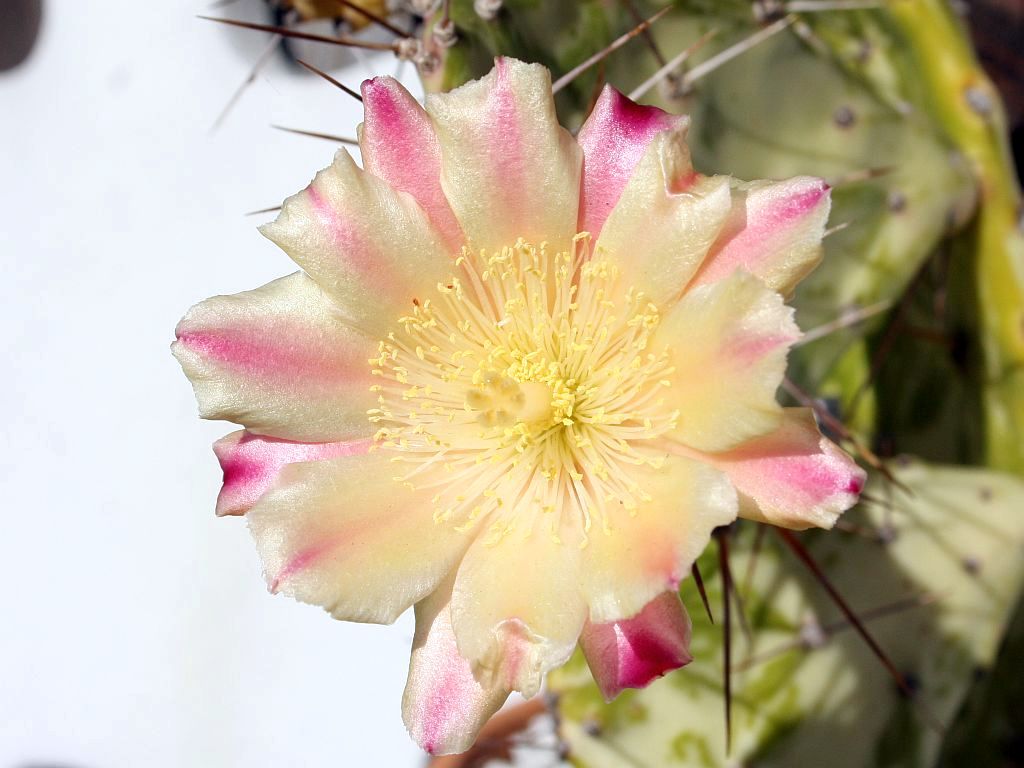We drove from Arizona to our California house today. I went out on the patio to find that the plumerias, the Kaffir lily, the Devil’s Tongue barrel cactus and an opuntia vulgaris cactus in bloom. The spikes on the cactus might be threatening, but there’s nothing ‘vulgaris’ about the flower. Click on the image to enlarge.


We moved our plumeria from the back to the front, and it’s taking off like a weed!
Guess it needed a bunch more sun.
They really love the sun dont like the cold at all! Their flowers are just wonderful.
Devil’s Tongue barrel? Don’t believe I’ve heard of that one, though I have three Devil’s Heads (Echinocactus texensis). They’re also known as Horse Cripplers.
One thing I’ve noticed about cactus, they have different names depending on a state or city. Weve got one thats called Devils Talon and Devils Claw and Devils Tongue all one cactus.
Crotalus the name Horse Crippler really is graphic!
An image of the Devil’s Tongue flower top of the barrel can be seen at:
http://capnbob.us/blog/2010/05/15/devils-tongue-cactus-flower/
Now I remember, Damsel! Devil’s Tongue is Ferocactus latispinus! Both the common name and the botanical name refer to the very broad hooked central spine.
Horse Crippler is well-named. In much of its range, it hides in the grass, and since it is small in size, flattened in shape, and stout of spine, it’s like Nature designed a booby trap for livestock. But once discovered, and dug up and potted, it is a magnificent small barrel cactus with a notorious reputation. And as a potted or garden plant, it is no longer dangerous to livestock. It’s one of my favorite barrels, mostly for its reputation.
You’re right about common names being so different from one area to the next. “Horse Crippler” is sometimes applied to Echinocactus horizonthalonius, and by your example, many names are applied to Ferocactus latispinus. Hence, the need for the scientific nomenclature. If I say “horse crippler”, it could refer to either of the aforementioned Echinocacti, or even Agave lechuguilla in parts of New Mexico. But if I say “Echinocactus texensis”, it narrows everything down to one kind of cactus.
Oh, yeah. It was Cap’n Bob that gave me the link to the picture. Thanks!